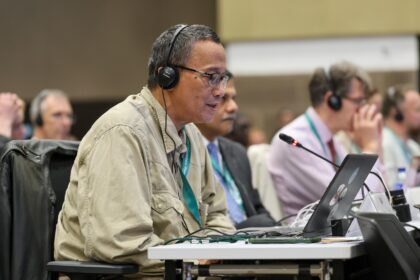[ad_1]
On the night of Jan. 7, 2020, suspected Iran-backed militias somehow managed to get within close range of Al-Asad Airbase in western Iraq’s Anbar province, home to 2,000 US troops.
Their mission — to revenge the US drone killing of Iran’s top security and intelligence commander, Maj. Gen. Qassim Suleimani, who led the powerful Quds Force of the Islamic Revolutionary Guards Corps.
According to a report by 4CBSDenver, the attackers would launch a salvo of rockets at the sprawling base, one of the few locations in the country that still house US forces.
Within seconds of these rockets being launched, high-tech surveillance sensors in geosynchronous satellites with the Space Based Infrared System (SBIRS), detected the incoming threat.
Thousands of miles away, on the plains east of Denver, Colorado, the alert was relayed to a series of giant “golf ball†radomes at Buckley Air Force Base, home to the 2nd Space Warning Squadron, 4CBSDenver reported.
A crew at the 2SWS operations center quickly sprung into action.
While it is not known who was on duty that night, we do know that they had six minutes to act, before the missiles would hit their target — potentially killing hundreds of US troops.
Moments later, the base was alerted.
“Around 1 a.m., we heard ‘Seek Shelter, Seek Shelter, Seek Shelter’ over the loud speakers, then we immediately felt and heard the impact,†Master Sergeant Janet Liliu recalls.
“I wasn’t ready to die, but I tried to prepare myself with every announcement of an incoming missile. I had to. We all had to.â€
A collective 12,000 pounds of rocket-mounted warheads rained down on US troops that night, the largest ballistic missile attack on Americans ever, 4CBSDenver reported.
The bunker that troops sought shelter in was designed to withstand only a 60-pound onslaught.
Miraculously, no one died.
But facilities around the base were destroyed. Buildings were reduced to rubble, runways were shredded, equipment and vehicles were destroyed.
Later, the Pentagon would say that 110 people had to be treated for traumatic brain injuries, CBSDenver reported.
Lieutenant General David Thompson, Vice Commander of the United States Space Force, would later tell an Air Force Association Air Warfare Symposium that the missiles headed for Al-Asad Airbase were in the air for just six minutes.
“If those Airmen on crew that night, specifically the warning officer at the warning station, if she had not done her job better than her training, if she had not detected that launch, determined where it was, where it was going, who was under threat, and released warning messages that got to the Americans at Al-Asad Airbase, today we would be talking about dead Americans,†General Thompson told the symposium.
SBIRS was manufactured by Lockheed Martin in Sunnyvale, California, but Lockheed Martin’s military space operations are headquartered at their Littleton campus.
The system uses highly-advanced infrared technology and a network of satellites in orbit and on the ground, like those inside the radomes at Buckley Air Force Base, to provide early missile warning around the globe for the US military.
Details are highly classified, but Lockheed Martin says SBIRS missions are considered among the highest of priorities for the United States, 4CBSDenver reported.
The Government Accountability Office tagged the SBIRS cost at nearly US$20 billion.
Not only did the early warning system housed at Buckley Air Force Base in Aurora play a crucial role in saving American lives, it may have also thwarted a major new conflict in the Middle East.
[ad_2]
Source link













